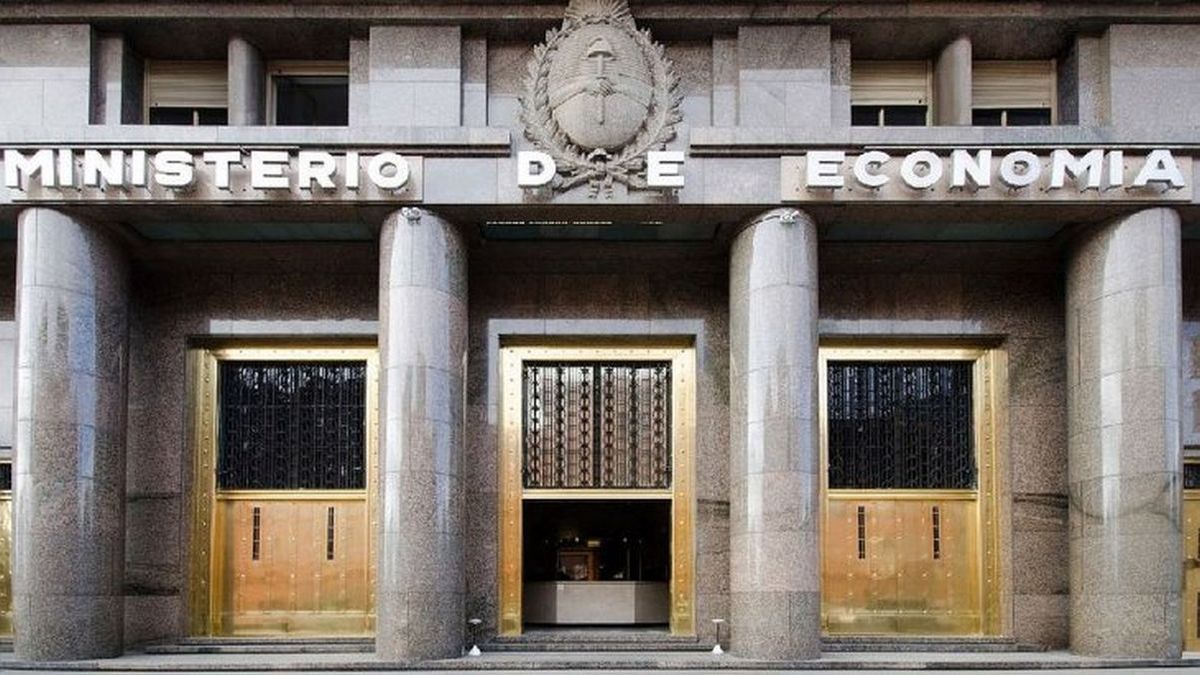The economic team will launch in the next few days the new monetary regulation letterswhich will derive the remainder of the remunerated debt of the Central Bank to the Treasury balance sheet. The announcement of this second stage of the official program (called by Javier Milei as “zero emission”) did not meet the expectations of the market, which was expecting signs of modification of the exchange rate scheme, which it perceives as exhausted. Likewise, the measure will derive the Focus on the fiscal front: is that, as the central administration will assume the payment of the interest on these bills, there will be a greater burden on public accounts at a time when tax collection is plummeting.
It is not yet clear whether the fiscal result for June was in deficit, as predicted by the unfavorable seasonality implied by the payment of the half-yearly bonus, or whether the Government managed to maintain the balance thanks to other accounting tricks, such as the delay in the payment of electricity subsidies. In any case, the persistence of the recession impacted tax collection: it fell 14% year-on-year in real terms, despite the jump in income from the PAIS tax. And In the second half of the year, which is always more complicated in terms of taxes, there will be an additional burden of expenditures for the payment of interest on remunerated debt. which until now the BCRA had been dealing with by issuing money.
The announcement on Friday, June 28, Luis Caputo and Santiago Bausili The Central Bank limited itself to reporting that the remunerated liabilities of the BCRA in pesos (overnight payments) will be completely eliminated to close the monetary emission tap that implies the payment of the interest on these instruments. In exchange, the banks will be given a new letter whose rate and liquidity will be managed by the Central Bank but which will be included in the balance sheet of the Central Bank. Treasurethat will be responsible for paying the interest.
To prevent this change from being perceived as more risky for the banks’ assets (and therefore for the deposits of savers), officials sought to clarify that the Fiscal Liquidity Letters (the name that will be given to the new instrument) will function in a similar way to the repos since the Central Bank will manage the liquidity daily through purchase and sale operations. In short, the measure is nothing more than a railing from one area of the State to another so that the interest is paid with a greater fiscal adjustment instead of with monetary issuance.
In this regard, various private sources calculated that the Treasury will need to make a additional adjustment of between $600 billion and $800 billion per month to meet those interests (or more if there is a considerable increase in the rate). Although official confirmation is still pending from the regulation of the new bills, everything indicates that they would be capitalizable: if this were to happen, this would allow the Government to perform the accounting trick of not counting them in the fiscal result.
“Of course it is simply an accounting issue (because the fiscal cost is still there, beyond how it is calculated), but if the Government wants to continue showing a fiscal surplus, it will have to limit the payment of interest for the replacement of the passes,” said the consultant 1816 in a report and gave an example: “If the treasury had $30 billion placed at 0% in the BCRA and paid an interest rate of 4.25% per month and that were recorded above the line (that is, if it were not capitalized), it would imply a fiscal cost of almost $1.3 billion per month.”
In short, this is a cost that, in any case, will be added to the strong adjustment that the Executive is already carrying out and that will imply new cuts in other items in order to allocate those resources to the payment of the debt.
“The government presents this as a virtue, as it adds one more element to reinforce the commitment to zero deficit, but the truth is that this new pressure on public accounts imposes a greater difficulty in sustaining fiscal numbersin a context where the liquefaction of spending finds its limits and unavoidable expenditures begin to concentrate. In this sense, although for now and as long as rates remain low, the flow of interest would not represent an excessive burden, this could change quickly if economic activity does not recover and collection continues to deteriorate,” considered a report by the consulting firm in this regard. Vectorial.
Tax collection plummets
The truth is that the June figures reflect a worrying situation for the treasury. Tax collection last month was $11.3 billion, that is, it had a nominal increase of 221.2% year-on-year. “Taking an inflation of 5% for the last month, it gives a decrease in real terms of 13.9%,” Vectorial highlighted.
“After the month of May, in which revenues had risen more than 10% year-on-year thanks to the effect of the December devaluation on corporate income tax, The impact of the recession is once again evident in tax collection. In fact, the biggest falls in real terms are seen in those taxes linked to economic activity,” analyzed the consulting firm headed by Eduardo Hecker.
In that sense, the VAT recorded a real year-on-year decline of 20%. On the other hand, Profits fell 16.8%, “despite the fact that advances to companies began to be collected, calculated on the basis of 2023, which had the accounting effect, a product of the depreciation of the peso, which was mentioned above,” Vectorial indicated, although it clarified that the extension of this tax decided by Congress in the Fiscal Package and the beginning of the due dates, postponed by the treatment of the Law, “should reflect a better performance of this tax during the coming months.”
Refering to social Securityincome from personal contributions and employer contributions fell 14.7% and 10.2%, respectively, “accounting for both the deterioration of wages in the last year and the increasingly accelerated destruction of employment,” the firm explained. It added: “The exception among the taxes most closely linked to domestic activity is the Check Taxwhose collection rose this month by 1.84% in real terms, but based on the collection of the due dates also from May, which had been postponed. The accounting strategy was not enough to compensate for the fall in the rest of the taxes.”
Regarding taxes linked to foreign trade, the collapse of the amount collected via withholdings (36.8%) reflected the low level of export liquidation in June, which influenced the abrupt halt in the purchase of reserves by the BCRA.
The only significant offset was the growth in I revenuescountry tax of the real 281%, which came to represent 7% of the total collected, which received the additional boost from the liquidation of series 3 of the BOPREAL. Thus, Vectorial considered that the elimination of this tax, which Caputo promised to return from the 7.5% rate (after this same administration raised it) in August or September, represents one of the most evident fiscal challenges for a government that, now with the monetary regulation letters, adds new commitments to its coffers.
Pressure on provincial accounts
The truth is that the second stage of the plan announced by the Government will not only affect the National Treasury, but will also have an impact on provincial accounts. Some districts tax banks with Gross Income for the interest on passive transfers from the BCRA. These resources will no longer be collected since the bills issued by the Treasury are not subject to the tax.
Which districts are involved? Catamarca, Mendoza, Misiones, San Luis, Tucumán and the Autonomous City of Buenos Aires are the ones that apply Gross Income Tax on passes. The most affected will be CABAsince most of the banking entities are concentrated in its territory. On the other hand, the fact that they do not pay this tax will leave a better balance for the effective rate that the banks receive (estimated at around 0.2 percentage points per month), which the Government hopes will be transferred to fixed-term deposits.
Source: Ambito




